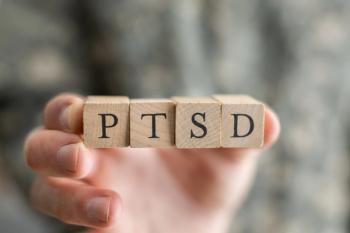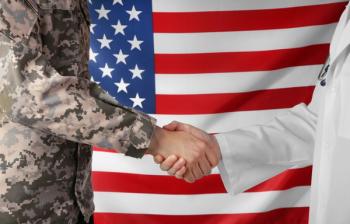
Differentiating mTBI/Concussion
Understanding the symptom overlap between concussion/mild traumatic brain injury and other psychiatric conditions, such as PTSD and depression, can assist clinicians in differential diagnosis and providing effective treatment.
A traumatic brain injury (TBI) occurs when brain function is altered due to an external blow to the head or body.1 National surveillance data indicates there are approximately 3 million new cases of TBI each year in the United States, and that the incidence of TBI has been increasing since 1995.2 Rates of TBI are increasing in all age groups, but particularly for adults over the age of 65, primarily due to falls.3 According to some estimates, mild traumatic brain injury (mTBI), or concussion, accounts for as many as 75% to 90% of all
Definition
The American College of Rehabilitation Medicine (ACRM) defines mTBI as:
- Any period of loss of consciousness (LOC)
- Any loss of memory of events immediately before or after the incident
- Any alteration in mental state at the time of the incident (ie, feeling dazed or confused)
- Focal neurological deficits that may or may not be transient, but the severity does not exceed:
- LOC of 30 minutes or less
- Initial Glasgow Coma Scale (GCS) score of 13-15
- Posttraumatic amnesia (PTA) of < 24 hours
- Normal brain imaging results (ie, CT, MRI)5
Despite current surveillance data, the actual number of mTBIs occurring each year is difficult to measure because many individuals do not seek medical care immediately following injury. Although the military and most athletic organizations (ie, organized school, college, and professional sports teams) provide education, testing, and strict protocols for identifying and managing concussion, many individuals with noncombat or nonsports-related mTBI/concussion do not seek initial treatment. Some may delay seeking medical care for weeks or months until attempts to self-manage symptoms fail; they are encouraged by family, coworkers, etc, to seek care; or their symptoms become problematic.6
Symptoms
mTBI/concussion can result in multiple and complex changes in a number of domains, including physical/somatic, cognitive, emotional, and behavioral.7 Physical or somatic complaints following mTBI include
Although most symptoms associated with mTBI resolve in a relatively short period of time (ie, 2 to 4 weeks), about 10% to 20% of individuals with mTBI experience symptoms beyond 4 weeks. When symptoms persist beyond 4 weeks, a diagnosis of persistent postconcussive symptoms (PPCS) is offered. Risk factors that predict PPCS include female gender, being older than 40 years of age, history of
Unfortunately, diagnosis is complicated because usual imaging techniques (ie, CT scans) do not readily detect concussion/mTBI, and there is considerable symptom overlap between mTBI and other psychological conditions. For example, light/sound sensitivity, headache, sleep disturbance, dizziness, fatigue, and cognitive problems such as decreased concentration, impaired attention, and poor memory are present in both mTBI and
Diagnosis
Given the symptom overlap between mTBI and other psychological/psychiatric conditions, obtaining a thorough event history is extremely important. During the clinical interview, patients should be queried regarding any recent falls, vehicular or sporting accidents, or any other event that could have caused a blow to the head or body. A thorough neuropsychological evaluation can provide information about a patient’s cognitive and psychological functioning, and personality features necessary for differential diagnosis. It can also begin the rehabilitation process by providing education, reassurance, as well as referral for comprehensive therapies to treat cognitive and emotional consequences of mTBI.
Though not widely available, there are now sophisticated imaging studies and blood biomarkers that can detect concussion/mTBI. Diffusion tensor imaging (DTI) can reliably detect microstructural white matter changes that accompany diffuse axonal injury (DAI) produced by rapid acceleration/deceleration injuries.9 Blood biomarker tests can detect brain-derived proteins that are released into the blood stream within minutes to hours following brain injury. Two such biomarkers—glial fibrillary acidic protein (GFAP) and S 100 calcium-binding protein B (S100B)—have been used in clinical studies to diagnose concussion.10
Treatment
Research indicates that effective management of concussion/mTBI includes early identification and treatment.11 After a brief, initial period of rest to lessen symptoms and reduce metabolic demands, patients should be encouraged to begin treatment. For most individuals with concussion/mTBI, treatment should be symptom-focused and include education about the injury, provide optimistic expectations about recovery and outcome, provide information about how to manage symptoms (ie, headache,
Concluding Thoughts
Concussion/mTBI is the most common type of brain injury. It can be difficult to diagnose for a variety of reasons, but primarily because the symptoms of concussion/mTBI are similar to the symptoms of other psychiatric conditions such as anxiety, depression, and PTSD. Although symptoms of concussion/mTBI resolve within 2 to 4 weeks, about 20% of patients with concussion/mTBI will experience persistent or worsening symptoms and may require comprehensive, interdisciplinary treatment. Clinicians should understand the symptom overlap between concussion/mTBI and other psychiatric conditions in order to provide accurate diagnosis and treatment.
Dr Seale is the regional director of clinical services at the Centre for Neuro Skills, which operates post-acute brain injury rehabilitation programs in California and Texas. He is licensed in Texas as a chemical dependency counselor and psychological associate with independent practice. He also holds a clinical appointment at the University of Texas Medical Branch (UTMB) in Galveston in the Department of Rehabilitation Sciences.
References
1. Menon DK, Schwab D, Wright DW, et al.
2. Coronado VC, McGuire LC, Sarmiento K, et al.
3. Albrecht JS, Hirson JM, McCunn M, et al.
4. Kay A, Teasdale G.
5. American Congress of Rehabilitation Medicine Mild Traumatic Brain Injury Committee of the Head Injury Interdisciplinary Special Interest Group.
6. Essential Brain Injury Guide, 5th edition. Brain Injury Association of America; 2019.
7. Junn C, Bell KR, Shenouda C, et al.
8. Morgan CD, Zuckerman SL, Lee YM, et al.
9. Shenton ME, Hamoda HM, Schneiderman JS, et al.
10. Papa L, Ramia MM, Edwards D, et al.
11. Silverberg ND, Iaccarino MA, Panenka WJ, et al.
Newsletter
Receive trusted psychiatric news, expert analysis, and clinical insights — subscribe today to support your practice and your patients.

















